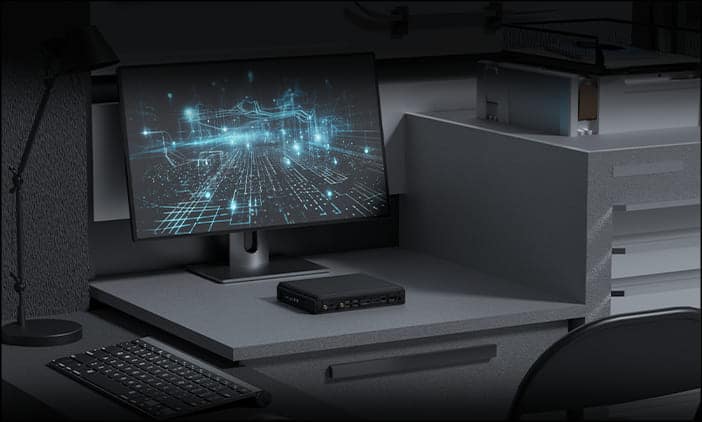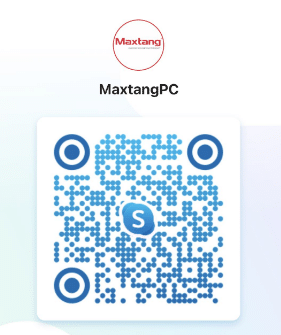The computing world is ever-changing. Mini PCs are one of the most advanced techs – despite their small size, they can do a lot! Here, we’ll look into the differences between standard and compact mini PCs.
Compact mini PCs are made for portability. They’re light and small – perfect for carrying around or slipping into tight spaces. Even with their size, these PCs don’t lack performance. They can still handle tasks like media streaming and light gaming.
Standard mini PCs, on the other hand, are larger. They have more room for expansion slots and connectors, giving users more options to customize their setup. Plus, these PCs also have better cooling systems. So, you can run high-performance apps without worrying about overheating.
Let me share a personal experience. When I was working on a project that required a lot of travel, I needed a reliable and portable PC. After doing some research, I came across a compact mini PC with excellent specs. It was my faithful sidekick throughout my project – I could work anytime, anywhere!
Understanding Mini PC Form Factors
The world of mini PCs is captivating and offers various form factors that fit different wants and needs. Knowing these form factors is essential for making the right decision when buying or assembling a mini PC.
To help you get a better understanding of mini PC form factors, let us look into a table that shows some main contrasts between two famous types: compact and standard mini PCs.
| Form Factor | Compact Mini PC | Standard Mini PC |
|---|---|---|
| Size | Small, usually up to 7 inches | Bigger, from 10 to 15 inches |
| Performance | Good for browsing and office work | Suitable for demanding tasks such as gaming |
| Expandability | Limited upgrade options | More potential for expansion and customization |
| Ports | Fewer ports available | More ports for connecting peripherals and accessories |
| Cooling | Limited cooling capacity | Better heat dissipation through larger heatsinks |
| Aesthetics | Sleek and space-saving design | Bulkier and more traditional in appearance |
Apart from these major differences, there are also special details in each category that might influence your decision. For example, compact mini PCs usually prioritize energy efficiency, making them ideal for conserving power. Yet, standard mini PCs may offer extra features like optical drives or extra storage bays.
Now I will tell you a true story that demonstrates the importance of choosing the right mini PC form factor. Sarah, a graphic designer, needed a powerful workstation that could handle complex rendering tasks and still have an orderly workspace. Initially, she selected a compact mini PC but soon learned it could not keep up with her workload. After exchanging for a standard mini PC with improved cooling and expandability, Sarah got the performance she wanted without compromising aesthetics.
Knowing mini PC form factors is critical in navigating the vast ocean of options. By analyzing your needs and weighing the positives and negatives of different form factors, you can make a well-thought-out choice that fits your needs precisely.
Features and Benefits of Compact Mini PC Designs
Compact mini PCs are the ideal choice for those needing a small yet powerful computing solution. Saving space and portability, these designs are perfect for limited-space users or those who prioritize convenience. Plus, they come with energy-efficient components, high-performance processors, and advanced connectivity ports.
Special features of compact mini PCs include innovative cooling mechanisms, noise reduction technologies, and personalization options. When selecting one, consider factors such as the use case scenario, desired performance, and available budget. This way, you can maximize productivity and convenience.
Features and Benefits of Standard Mini PC Designs
Standard Mini PC Designs pack a punch! These tiny machines boast powerful processors and graphics cards, perfect for multitasking. Plus, their space-saving designs take up little room – great for small offices and cluttered spaces.
You can also take these mini PCs with you wherever you go; they are lightweight and easy to carry. They run quietly too, providing a noise-free environment. And, with their various ports and connectivity options like USB, HDMI, and Bluetooth, you can connect multiple devices without hassle.
Whether you need a workhorse for multimedia editing or a gaming rig, standard mini PCs can do it all. Plus, they often come with expandable storage and advanced security features that keep your data safe and secure.
When choosing a mini PC, make sure it has the specs you need for your intended use. There’s a standard mini PC out there for everyone!
Comparison between Compact and Standard Mini PC Designs
Compact and standard mini PCs have different sizes, performances, and functionalities. Let’s check them out in a table:
| Compact Mini PC Designs | Standard Mini PC Designs | |
|---|---|---|
| Size | Smaller | Larger |
| Performance | May have lower power | Higher power |
| Functionality | Limited expandability | Greater expandability |
Compact mini PCs have a special purpose – they are designed for limited use and space-constrained environments. Standard mini PCs can be more flexible since they are bigger and can be personalized.
Mini PCs have a long story. They were created in the late 1990s as a way to save space. As technology improved, mini PCs got better performance and more functions. Now, you can choose between compact and standard mini PCs to fit your needs.
Conclusion
In today’s tech-filled world, picking between a standard or compact mini PC can be overwhelming. Analyzing both provides a unique set of benefits for each.
Compact mini PCs are great for those who crave portability and space-saving. They perform well, which is great for individuals who are always on the go.
Standard mini PCs have the advantage of larger sizes and hardware capabilities. Plus, they provide excellent storage options.
However, one must be aware of the ever-evolving landscape of technology. Not acting fast could mean missing out on potential breakthroughs in mini PC design.
Frequently Asked Questions
Q1: What is the difference between compact and standard mini PC designs?
A1: Compact mini PC designs are smaller in size and more portable, while standard mini PC designs are larger and often offer better performance and expandability.
Q2: Are there any limitations to using compact mini PCs?
A2: Compact mini PCs may have limited connectivity options and fewer expansion slots, but they are still capable of performing most computing tasks efficiently.
Q3: Can I upgrade the components of a compact mini PC?
A3: Upgrading the components of a compact mini PC is usually more difficult compared to standard mini PCs due to their smaller form factor, but it is still possible with some models.
Q4: Do compact mini PCs offer sufficient computing power?
A4: Compact mini PCs are capable of handling everyday computing tasks, such as web browsing, office applications, and multimedia playback. However, they may not be suitable for resource-intensive tasks like gaming or video editing.
Q5: Are compact mini PCs more energy-efficient than standard mini PCs?
A5: Generally, compact mini PCs consume less power compared to standard mini PCs due to their smaller size and lower hardware requirements. However, the energy efficiency can vary depending on the specific model and components used.
Q6: Which form factor should I choose: compact or standard?
A6: The choice between compact and standard mini PC designs depends on your specific needs. If portability and space-saving are essential, compact mini PCs are ideal. If performance and expandability are more important, standard mini PCs would be a better choice.




